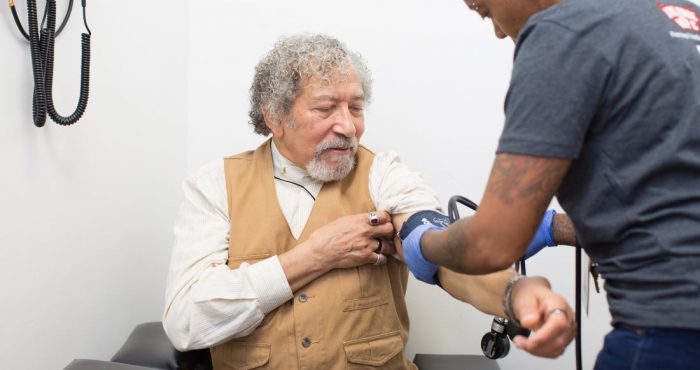Integrase inhibitors—potent antiretrovirals that quickly and powerfully suppress HIV—have allowed HIV researchers and clinicians to explore dosing regimens that involve fewer than three or four drugs. Proponents of dual therapy say that effective regimens involving fewer drugs will lower costs, decrease pill burden and reduce the potential for drug-drug interactions and side effects. But is it that simple?
“Two-drug regimens are exciting,” said Monica Gandhi, MD, MPH, medical director of the Ward 86 HIV clinic at San Francisco General Hospital and associate division chief of the Division of HIV, Infectious Diseases, and Global Medicine at UCSF. “But there are many clinicians who have been treating HIV for a long time that are a little bit alarmed over the two-drug fanfare. We’re not quite ready to jump on board with two-drug regimens for everybody.”
“On principal, fewer drugs is better,” said Keith Henry, MD, from Hennepin County Medical Center. “I like the philosophy of using fewer drugs, but I’m still not convinced that it’s going to be hugely beneficial. There may be only nuanced or subtle clinical advantages of a two- versus three-drug strategy evident over time—that we haven’t fully studied—especially if the drug you’re jettisoning is relatively non-toxic. In the U.S., most people that are on standard three-drug regimens are increasingly on one of the simplest, safest regimens currently available.”
Currently, there is only one recommended two-drug regimen option for people living with HIV, but the future may well bring more. Here’s a summary of challenges with the current option, and an overview of two other combinations currently being tested.
Dolutegravir plus rilpivirine
Dolutegravir (integrase inhibitor) plus rilpivirine (NNRTI) is the only two-drug regimen currently recommended by the U.S. Department of Health and Human Services (DHHS). These medications can be purchased separately (no generic versions are available in the U.S.), so some people on this regimen take two pills once per day. This combination is also formulated as a single-tablet under the brand name Juluca, which is one tablet taken once per day.
This two-drug combination is not recommended for people just beginning antiretroviral therapy—it’s only a switch option for people who have been virally suppressed for at least six months.
Gandhi said that at Ward 86, the HIV clinic at San Francisco General Hospital, very few people are taking Juluca or dolutegravir and rilpivirine. The combination has been studied only in patients without a history of virologic failure, which is not common among people treated for HIV at Ward 86. Moreover, the risk of drug resistance, and need for food security, makes this regimen only a good choice for people who are highly adherent to their medications—and Ward 86 sees many patients who are unstably housed, struggling economically or otherwise experiencing life challenges that can stand in the way of perfect adherence.
“The concern about a two-drug regimen and starting patients on this regimen is that if you lose something like dolutegravir [to drug resistance], that would make it really difficult in the future in terms of treatment options,” said Gandhi. “I think Juluca is very exciting, but it may be more so for people who haven’t had any failure to previous regimens and who are highly adherent. It’s not for everybody,” she said.
Another issue is that Juluca—a new drug approved in November 2017—is expensive, and the ease of a complete one-tablet regimen may be offset by its high price tag. Henry from Hennepin County Medical Center said that at his hospital’s pharmacy, Juluca can cost more than $38,000 for one person’s year-long supply. (The wholesale acquisition cost is nearly $31,000/year.)
“If we purchase the tablets separately, it’s hundreds of dollars per month cheaper than that. If you look at what’s happening in society in healthcare in general, we still have to be good stewards of resources,” he said. “If you have individual small pills that are well-tolerated, I am not convinced that you always have to go with the single-tablet.”
Dolutegravir plus lamivudine
Dolutegravir plus lamivudine (3TC) is a promising two-drug regimen that is currently being studied. (It is not yet approved or recommended for use by the U.S. DHHS.) A generic version of lamivudine is available in the U.S.
At the AIDS 2018 conference in July, Pedro Cahn, MD presented results from the GEMINI-1 and GEMINI-2 studies comparing dolutegravir/lamivudine to a standard three-drug regimen of dolutegravir/tenofovir disoproxil fumarate (TDF)/emtricitabine (FTC). The study enrolled treatment naïve people who had not yet started antiretrovirals, with no evidence of drug resistance.
The researchers compared the percent of people who achieved viral suppression after 48 weeks between the two treatment groups, in addition to differences in CD4 count gains, adverse events and other safety and tolerability data.
Overall, the studies demonstrated that the two-drug regimen was non-inferior to the three-drug regimen: 93% of participants in the two-drug regimen and 94% of participants in the three-drug regimen achieved virological suppression at 48 weeks.
There were fewer drug-related adverse events with the two-drug regimen, and the two-drug regimen was also associated with better kidney and bone outcomes.
“As you well know, today ART means lifelong treatment,” said Cahn. “So as much as we can do to reduce drug burden for our patients is very welcome in terms of less long-term drug toxicity.”
Henry said that it will be interesting to see, as more efficacy data becomes available, what the differences might be between dolutegravir paired with lamivudine versus rilpivirine. He also plans to keep an eye on cost, and says this will continue to be a concern for patients and providers.
“This is part of the confusion of our health care system right now—and we’ll continue to have more of these dilemmas as time goes on and as we have more two-drug options and more generic drugs available. What is the real benefit of a single-tablet integrase regimen versus two or three small pills that are generic and much cheaper? If the single-tablet is 5% or 10% better tolerated or effective, but 45% to 50% more expensive, would a cost analysis support the use of the branded drug? We haven’t gotten into this as much as we should, but the overall state of healthcare financing means that we need to be more cost-benefit conscious.”
Cabotegravir plus rilpivirine
Perhaps the most exciting two-drug regimen currently being tested is the long-acting formulation of rilpivirine and cabotegravir (which is an experimental integrase inhibitor). The dosing regimen now being tested frees people from taking oral antiretrovirals every day. Instead, people receive a long-acting injection once every four weeks or once every eight weeks.
So far, results of the LATTE-2 study, which is testing this formulation, are very promising. The injected cabotegravir and rilpivirine medications kept viral loads suppressed in 94% of people receiving injections every eight weeks and in 87% of people receiving injections every four weeks, when measured at the 96-week time point. People receiving the injections report high levels of satisfaction and convenience with the regimen, and also express willingness and desire to continue with this drug regimen.
If the long-acting injectable comes to market, Gandhi said she believes it could benefit people who struggle to take medication every day—in addition to people who are highly adherent (a bimodal population).
“We have many patients at Ward 86 who simply cannot fit taking a medication every day into their lifestyle, but, who actually show up to the clinic fairly often. People who are homeless may not come in for their primary care visits, but they show up for acute care visits. They’re engaging with the clinic a lot, which gives us hope that this will be an opportunity for treatment.”
—
Interested in finding out more about long-acting antiretroviral for HIV? Read Liz Highleyman’s summary of the LATTE-2 study, which gives an in-depth explanation of how well cabotegravir and rilpivirine maintain viral suppression, adverse events associated with the injections, and more.
—
San Francisco AIDS Foundation receives funding from corporate partners including those in the pharmaceutical industry. Editorial decisions on our blog and website are made independently. For more information about SFAF funding, please refer to our financial and tax documents.










